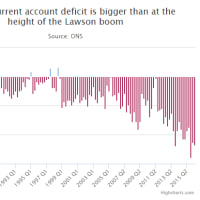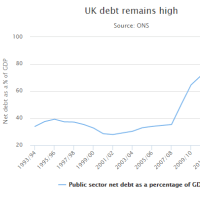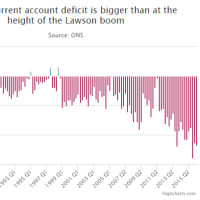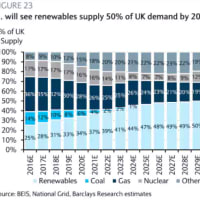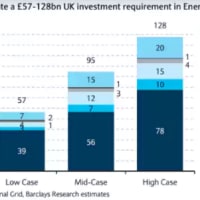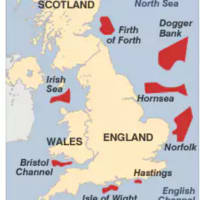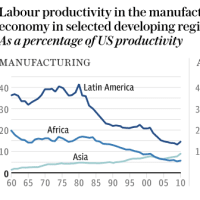判断に悩むわけだが、とりあえず拾ってみた。
Haiti's rising food prices drive poor to eat mud
(食品価格が急騰で貧民が泥を食べさせられるハイチ)
By Tom Leonard in New York
Telegraph:30/01/2008
Haiti's rising food prices drive poor to eat mud
(食品価格が急騰で貧民が泥を食べさせられるハイチ)
By Tom Leonard in New York
Telegraph:30/01/2008
Impoverished Haitians are increasingly resorting to eating biscuits made of mud as food prices soar in the Caribbean country.
カリブ海のハイチでは食品価格が高騰し、それにつれ貧しい人々は泥のビスケットを食べなければならなくなっている。
The discs are made from dried yellow clay mixed with water, salt and vegetable shortening or margarine.
この丸いビスケットは、黄色い粘土に水、塩、植物性ショートニング、またはマーガリンを混ぜて乾燥させたものだ。
The mud, which comes from Haiti's central plateau region, is first strained and then shaped into biscuits which are left in the sun.
ハイチの中央部にある高原で採取されるこの泥は、ろ過されてからビスケットの形にされて天日干しされる。
The pale brown biscuits, known by locals simply as "terre", have traditionally been eaten by pregnant Haitians and children as an antacid and source of calcium.
地元の住民には単純に「terre」として知られる薄茶色のビスケットは、制酸薬やカルシウム源として妊婦や子ども達が伝統的に食べてきたものだ。
However, for some Haitians unable to afford even a plate of rice, terre has become their staple diet.
しかしterreは米すら買えない一部のハイチ人の主食になっている。
The Food and Agriculture Organisation of the United Nations has expressed concern over food prices in the Caribbean, recently declaring a state of emergency in Haiti and several other countries.
国連食料農業機関は先日もハイチやその他数カ国で非常事態宣言を出し、カリブ海地域の食品価格について懸念を表明している。
The agency estimates prices have rocketed by as much as 40 per cent due to floods and crop damage caused by the 2007 hurricane season.
洪水や2007年のハリケーンの季節に生じた作物への被害のせいで、食品価格は最高で40%も急騰した、とFAOは見積もっている。
At the market in Haiti's La Salines slum, two cups of rice now sell for 60 US cents, up 10 cents since December and 50 per cent from a year ago.
現在、ハイチのLa Salinesスラムにある市場では、カップ2杯の米が$0.60で売られているが、12月以来$0.10、昨年以来50%も値上りしている。
Beans, condensed milk and fruit have gone up at a similar rate. Even the price of the clay used in the biscuits has increased considerably though, at five cents each, they are still relatively cheap.
豆類、コンデンス・ミルク、そして果物も同じような割合で値上りした。
一つ5セントと未だ比較的安価ではあるものの、ビスケットに使われている粘土の価格すら大きく値上りした。
The biscuits reportedly taste smooth but suck out the moisture from the mouth as soon as they touch the tongue, leaving an unpleasant earthy aftertaste which lingers for hours.
これらのビスケットは滑らかだとのことだが、下に触れるや否や口の中の水分を吸収してしまい、何時間も口の中に嫌な泥臭い後味が残る。
Gerald Callahan, an immunology professor at Colorado State University who has studied geophagy, the scientific name for dirt-eating, said mud can contain dangerous parasits or toxins. But it can also strengthen the immunity of unborn babies to certain diseases, he said.
土食症(土を食べることの科学的名称)を研究するコロラド国立大学の免疫学教授ジェラルド・キャラハンは、泥には危険な寄生虫や毒が含まれていることがあると語った。
しかし特定の病気に対する胎児の免疫力を強化することもある、と彼は言った。
Haiti is the poorest country in the western hemisphere. Seventy-six per cent of the population lives on less than $2.25 a day.
ハイチは西半球では最も貧しい国だ。
人口の76%が一日$2.25以下で暮らしている。
Malnutrition is widespread and diarrhoea kills one in five children under the age of five.
栄養失調は蔓延しており、5歳以下の子ども達の5人に1人は下痢で死亡している。
Haitian doctors say that people who depend on the biscuits for sustenance risk malnutrition.
ハイチの医師等は、このビスケットを食べて生きている人達には栄養失調の危険性があると言っている。
Dr Gabriel Thimothee, executive director of Haiti's health ministry, said: "Trust me, if I see someone eating those cookies, I will discourage it."
ハイチ保健省のガブリエル・ティモシー博士は「信じなさい。このクッキーを食べている人を見たら私は止めさせるだろう」と述べた。
 | KGBの世界都市ガイド晶文社このアイテムの詳細を見る |










